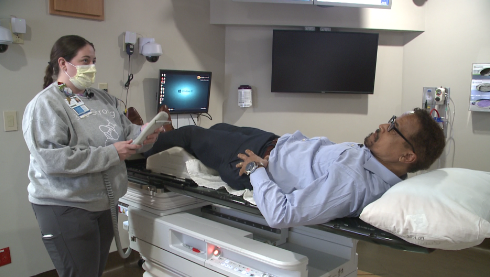NORFOLK, Va. — Hugs and pictures from the wonderful team at Sentara's Radiation-Oncology department on my final session of radiation. It's been five weeks of daily doses.
This all follows results from my biopsy at Urology of Virginia last December that showed I have prostate cancer.
And even though I have another phase in my treatment plan, because this is the last day of radiation, they say I get to ring the bell. And after I stepped outside the radiation chamber, I rang it hard!

So what's the next step, I asked my doctor, EVMS Radiation and Oncologist Mark Shaves.
"Next is your seed implant which is just an hour and a half in the O-R," he said. "We're going to put a number of radioactive seeds into your prostate through a number of needles."
These seeds are tiny, rice-like pellets encased in titanium, that will will release low levels of radiation. I'm using this treatment because my biopsy results showed one of the samples was considered aggressive.

Health
Kurt Williams starts radiation treatment for prostate cancer
"You have what we call high-risk disease," said Dr. Shaves. "That means you're at higher risk for it coming back in your pelvis. One of the tools we have to decrease the risk of that happening is to boost the dose within your prostate and the radiation from the seeds is very concentrated within the prostate only. So we can achieve a very high dose within your prostate and do it safely."
Dr. Shaves told me what I should expect after the seed surgery.
"Immediately not much a little discomfort from where we put the needles in," he said. "And then within a few weeks you'll notice more frequent urination more urge to go...getting up more at night."

I asked Dr. Shaves if that would be temporary.
"Yes," he answered. "That peaks generally at three or four weeks out from your implant and then gradually decreases over the next two to six months."
That surgery date in about four weeks, but right now I'm focused on celebrating the end of this chapter.






